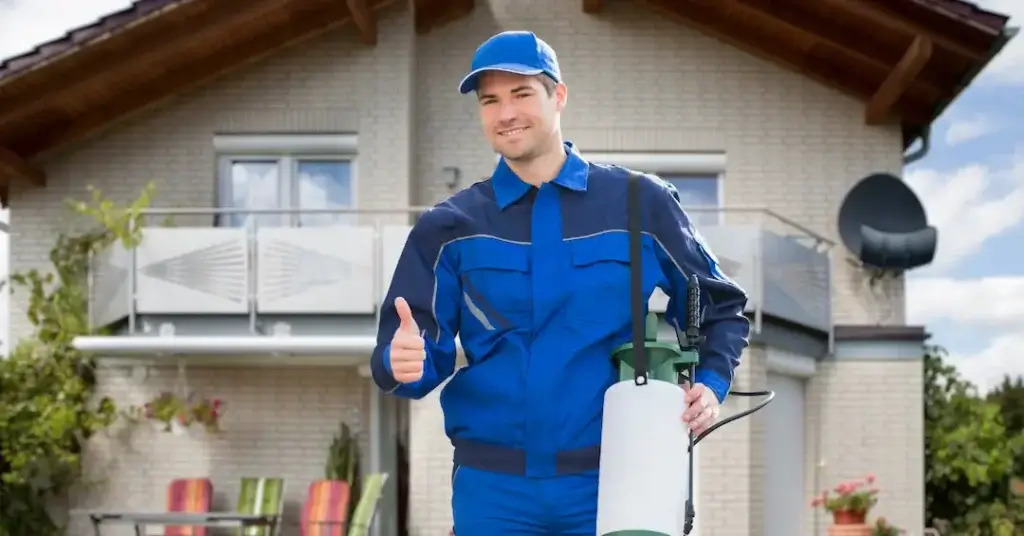A Comprehensive Overview to the Various Types of Parasite Control Approaches
With the myriad of insect control methods offered, it can be overwhelming to locate the most effective remedy for a details bug problem. In this comprehensive overview, we will certainly explore these various kinds of bug control techniques, offering understandings into their applications and advantages. By the end, you will have a more clear understanding of which technique might be the finest fit for your pest control demands.
Chemical Insect Control Approaches

One typical kind of chemical pest control is pesticides. Pesticides are chemical substances that are especially created to eliminate or fend off insects. They can be applied in various forms, such as sprays, baits, or cleans. Pesticides target specific pests, such as mosquitoes, termites, or ants, and can be used both inside your home and outdoors.
An additional kind of chemical pest control is rodenticides. These are chemical materials made to regulate populaces of rats, such as rats and computer mice. Rodenticides are usually made use of in bait type, which draws in the rodents and after that eliminates them after intake. They are generally made use of in agricultural settings, as well as in household and business buildings (Customized pest control solutions Chicago).
Weed killers, also referred to as herbicides, are another sort of chemical pest control method. Herbicides are created to uniquely eliminate undesirable plants, called weeds, without creating harm to desirable plants. They are generally made use of in agriculture, landscape design, and gardening to regulate the development of unwanted greenery.
While chemical insect control approaches can be highly reliable in removing pests, it is very important to use them sensibly and follow safety and security guidelines. Overuse or abuse of chemical pesticides can have negative effects on human health and the setting. As a result, it is crucial to utilize these approaches responsibly and think about alternate insect control strategies whenever feasible.
Organic Parasite Control Methods
Biological bug control approaches entail using living organisms or natural compounds to take care of and regulate pest populations. Unlike chemical methods, which typically count on artificial pesticides, organic control methods use the all-natural adversaries of pests to regulate their populations. This technique is considered more eco-friendly and sustainable, as it decreases using dangerous chemicals and minimizes the risk of pesticide resistance.
One commonly made use of organic pest control technique is the intro of natural predators or bloodsuckers. For instance, ladybugs are presented to control aphids, while particular wasp species are launched to target caterpillars. These killers and bloodsuckers eat pests, minimizing their numbers and protecting against invasions.
One more biological control approach is using pathogens. Particular microorganisms, viruses, and fungis can be used to infect and kill certain bugs. For example, the bacterium Bacillus thuringiensis is generally made use of to control caterpillars, as it generates toxins that are lethal to these bugs.
Organic control methods can additionally entail making use of scents or all-natural substances that disrupt the breeding patterns of parasites. By conflicting with their reproduction, these approaches aid to reduce pest populations over time.
While biological pest control methods are generally efficient, they might need longer periods to attain desired outcomes contrasted to chemical techniques. Furthermore, careful consideration must be offered to the selection and release of all-natural enemies to stop unintentional injury to beneficial organisms or environments.
Physical Insect Control Approaches
To efficiently take care of and control pest populations, different bug control techniques referred to as physical bug control methods are utilized. These approaches entail making use of physical obstacles, catches, or tools to stop pests from accessing or harming residential or commercial property. One common physical insect control technique is the use of screens or nets to keep insects out of structures or gardens. These displays are usually made from fine mesh product that enables linked here for air flow while stopping parasites from getting in. Another physical pest control technique is the installation of fences or walls to maintain bigger parasites, such as deer or rabbits, out of yards or agricultural fields. These barriers literally obstruct the insects' accessibility to the location, minimizing the potential for damages. In addition, catches and tools can be used to capture or repel bugs. For instance, sticky traps can be positioned in areas where pests are a problem, and the insects become stayed with the glue surface area. Ultrasonic devices can also be made use of to produce high-frequency sounds that are unpleasant to insects, causing them to leave the location. Physical parasite control techniques are an eco-friendly option to chemical pesticides, as they do not rely upon the use of dangerous chemicals.
Natural Pest Control Techniques
All-natural pest control techniques provide a sustainable and environment-friendly strategy to handling and getting rid of insects. One of the most typical natural bug control methods is biological control. By embracing useful site these natural bug control approaches, individuals and areas can properly handle parasites while reducing the adverse effects on the setting and human health and wellness.
Integrated Parasite Administration (IPM)
Integrated Pest Monitoring (IPM) is an extensive and systematic technique to pest control that combines numerous strategies and techniques to effectively take care of insects while reducing the usage of chemical pesticides. IPM aims to keep parasite populaces below the economic injury degree by making use of a combination of social, biological, and chemical control approaches.
Social control techniques involve customizing the atmosphere to make it less desirable for bugs. This can include practices such as plant rotation, proper sanitation, and the use of immune plant selections. By producing negative conditions for parasites, cultural control techniques can considerably minimize pest populaces.

Chemical control methods are utilized as a last resource in IPM. They involve the targeted and wise use pesticides home pest services to take care of bug populations. Unlike standard parasite control approaches, IPM intends to minimize using chemical pesticides by using alternate methods.
Integrated Bug Monitoring (IPM) is an aggressive technique that focuses on long-term pest administration as opposed to depending solely on responsive procedures. By integrating several control approaches, IPM offers a more lasting and eco-friendly approach to pest control.
Verdict
It talked about chemical, organic, physical, and natural parasite control methods, as well as the integrated parasite monitoring method. By understanding these numerous approaches, people can make informed choices on which pest control technique is most ideal for their particular needs and preferences.